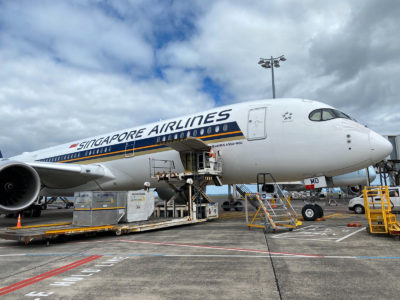
· Targeted roll-out over next 3-4 months will start to reach 2 million Kiwis in most at risk groups
· Plan prioritises people most at risk of harm if they get the virus and those who live and work in places where they are most likely to pick up COVID-19
· Those in South Auckland who’re over 65 or who have underlying health issues to start being vaccinated from the end of March
· Minimising risk of future outbreaks central to Government plan and prioritisation
The Government is targeting those most at risk of getting and spreading Covid-19 and those most at risk of getting seriously sick from it in the next phase of the vaccine roll-out, Covid-19 Response Minister Chris Hipkins announced this afternoon.
“A top priority this year is to make sure New Zealanders get free, fair and equitable access to Covid-19 vaccines,” Hipkins said.
“We are setting out the plan today after securing enough Pfizer/BioNTech vaccine for everyone in New Zealand to get the two doses they need to be fully vaccinated against the virus.
“The Ministry of Health is working with Pfizer on a delivery schedule to ensure a smooth rollout and a scaling up of our vaccination programme.”
More than 2 million New Zealanders are in line to start receiving the vaccine over the next four months with a focus on protecting those most at risk of getting the virus or being harmed by it, while also reducing the chance of ongoing spread and future outbreaks
“Our plan is clear – first protect those most at risk of picking up the virus in their workplace, reducing the risk of future outbreaks and lockdowns and then protecting those most at risk of getting seriously ill if they get the virus,” Hipkins said.
“Our sequencing plan provides certainty to the over 2m Kiwis who can expect to start being vaccinated during the initial stages of our roll-out over the next three to four months.
“This is a balanced plan that prioritises reducing the chance of future outbreaks while protecting our elders, those with underlying health conditions and those who live in locations where we know outbreaks have occurred.
“We are asking all New Zealanders to get vaccinated. Getting vaccinated is the best way to protect your whānau, their lives and their livelihoods.
“Every New Zealander will be able to get a vaccine and the vaccine will be free. The rest of the population will be able to be vaccinated from July onwards and our plan is to have as many people as possible vaccinated by the end of the year.
“As with the rest of our Covid-19 response we will make continuous improvements and adjustments to the vaccination roll-out. Our goal is to get as many people vaccinated as quickly as possible and that will require some flexibility within the sequencing.
“Further planning is underway on our ongoing response to Covid-19 including our management of the border. However the biggest factor in lifting Covid-19 restrictions will be a timely and high uptake of the vaccine.”
There are four main groups (timings will overlap, and dates might shift slightly as the Ministry continues to undertake modelling):
Group 1
50,000 border and MIQ workers, their household contacts and the people they live with. This started last month and the vast bulk will be completed this month, with at least one dose administered.
Group 2
Approximately 480,000 frontline workers and people living in high-risk settings. Starting with the 57,000 healthcare workers on community frontlines, and then moving through to healthcare workers protecting our most vulnerable and some priority populations. This started in February and will continue through to May.
Group 3
Priority populations. Approximately 1.7 million people who are at higher risk if they catch Covid-19. This is planned to start in May.
Group 4
The remainder of the general population – approximately 2 million people. Starting from July.
“Approximately 40,000 courses are being allocated to Māori and Pacific providers who are working directly with older people, and we are also recognising the special circumstances of South Auckland,” Hipkins said.
“Anyone who lives in the Counties Manukau DHB area who is 65 and older or who has an underlying health condition is also in Group 2. This recognises that there are many border operations and MIQ facilities and their workforces based in this area.
Hipkins said there will be a range of options to make it as easy as possible for people to access to the vaccine.
“Workers and residents of long-term residential care environments will get the vaccine at their workplace. There will also be Māori and Pacific providers, pop-up centres, GPs, medical and hauora centres, community clinics and larger scale events.
“An online tool that helps people find out when they can get the vaccine will be launched shortly. It describes the four broad groups and will take people through a series of questions to work out when it’ll be their turn.
“There are two further categories we are still looking at: one for people who may need to get a vaccine on compassionate grounds; and a national significance category, which could include groups who need a vaccine in order to represent New Zealand overseas.
“Decisions around these categories will be made at Cabinet in coming weeks.”









